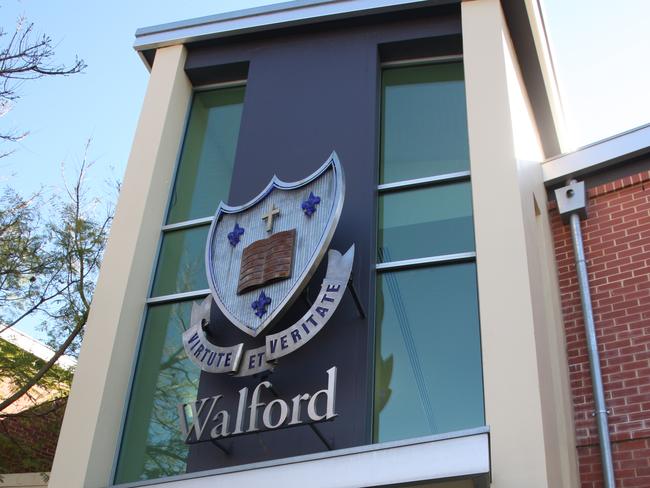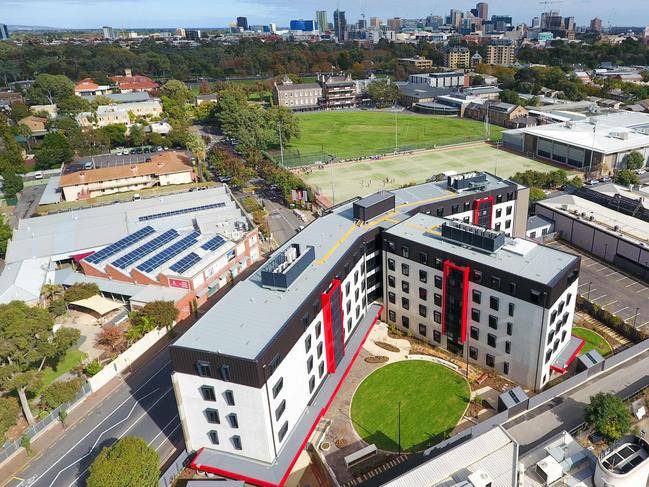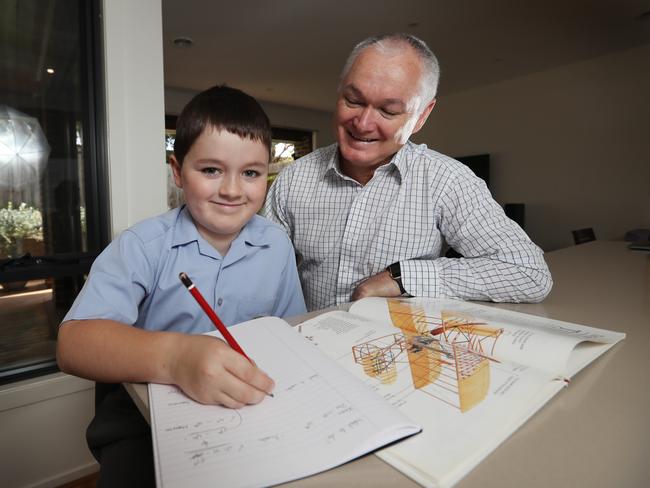How South Australian private school fees are soaring
The rising cost of sending a child to a private school means households are taking a significant hit, with parents forking out a third of their budget on costly fees.
Exclusive: As much as it hurts the hip pocket, South Australian parents have been given a breather against massive price hikes on private school fees with more schools responding to increasing pressure on family budgets.
A new national report shows the rate of increase in private school fees fell in 2020, with the average increase at 2.8 per cent, compared to 3.1 per cent last year and 3.2 per cent in 2018.
NSW and Victoria are by far the most costly states to send your child to a private school, with some schools now breaking the $40,000 barrier in fees, but the rate of inflation in South Australia and Western Australia is now sharper.
In some states, there is more than a $20,000 difference between the state’s most expensive schools.
The increase, although less than previous years, are still a significant hit to households with parents forking out 35 per cent of their budget on private school fees, according to Edstart, a lender that specialises in helping families pay for education costs.


“This inflation number has a far bigger impact on families than other household costs because so much of the family budget is tied up in school fees, when we talk about electricity or gas rises we are talking two to five per cent of the family budget whereas school fees are more like 35 per cent,” Edstart’s CEO Jack Stevens said.
“It’s similar to mortgage rates in terms of the significance on the household budget. And parents will choose a school at the upper end of their affordability level.”
NSW and Victoria are by far the most costly states to send your child to a private school but the rate of inflation in South Australia and Western Australia is now sharper.
There was also a notable fall in ACT, minus 2.82 per cent, but this was in response to increases last year, Mr Stevens said.
“The high fee schools do their thing and increase year on year regardless but the bulk of the market are much more receptive to market forces and their families and that is what has driven the downward trend in inflation – which is all really that parents can hope for,” said Edstart CEO Jack Stevens.
“In recent years the western states have been feeling the impact of a slightly different economy and schools have responded to that. But they have jumped this year.”
Independent Schools Council of Australia CEO Dr David Mulford said independent schools provides different options for parents.
“Independent schools reflect the social and economic diversity of Australia and are predominantly attended by middle-income families. Fees vary greatly, with the majority charging below $10,000 per annum,” he said.
While public school enrolments have increased in recent years ABS data shows there are still 42.9 per cent of Year 12 students across the country in a non-Government schools and that weekly spending on fees for primary and secondary school has increased by 11 times.

In South Australia and the ACT, the average increase was 2.25 per cent.
Geelong Grammar School in Victoria topped the nation according to Edstart data, based on the publicly available figures, with total annual fees for Year 12 students at $42,500 followed by The Kings School in NSW, $41,074.
In Queensland the highest paying school was Brisbane Grammar with parents shelling out $28,725, in Western Australia PLC costs $29,635, South Australia’s Walford Anglican School for Girls is $27, 409, ACT has Canberra Grammar at $25,750 and Tasmania’s The Friends’ School is $19, 920.
In Victoria, the average increase was 3.16 per cent, QLD was 3.06 per cent and NSW was 3.01 per cent.
and Western Australia 2.07 per cent while ACT was 2.25 per cent and Tasmania 2.78 per cent.

Melbourne father of three John Williams sends his three boys to Camberwell Grammar School and says the sacrifices are ones he and his wife are prepared to make.
“We did a lot of research and looked at all the different benefits of each and for us it was really about private because of the support and class sizes and the way different children with different learning styles could be accommodated,” he said.
Mr Williams said three children in private schooling means less holidays but said they made the choice for reasons beyond the academic education.
“Teachers in the public sector do an amazing job but it must be challenging with so many kids with different needs and styles of learning,” he said.
“Some of them do perform exceptionally well but for us making the decision was that if our children became academically inclined they could be supported, and if they weren’t they could be supported to achieve and become the best person they could be.”
“It is a far more complex decision than just looking at the academic scores of schools.”
Australian Parents Council president Jennifer Rickard said their research showed 85 per cent of parents with children at non-government schools said they would have to make substantial sacrifices if fees were raised significantly.
“There are parents who struggle to budget and go and get loans because it is something they value, people do make their choice as to their values and as to their priorities in any way they can,” she said.
“Public schools can also match their family values, it is about choice and every parent should be able to choice, although it is not necessarily a choice afforded to every parent.”
